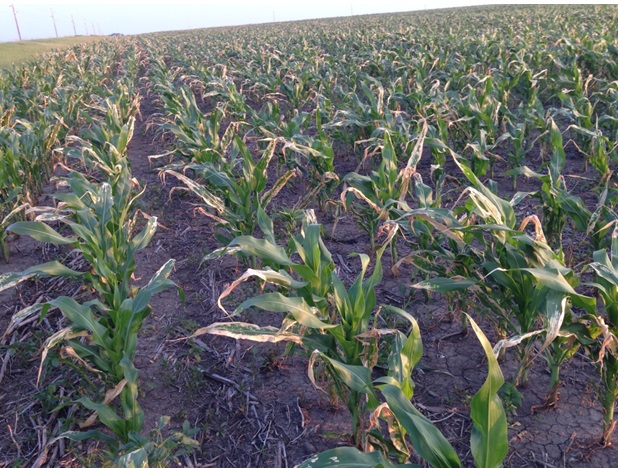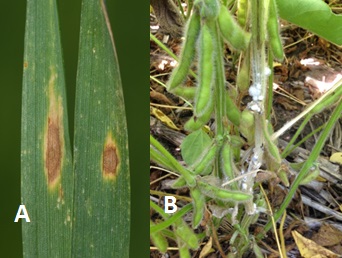By Ruth Beck and Emmanuel Byamukama, SDSU Extension
Some parts of the state have had freezing conditions, high winds, and blasting snow. These conditions may have caused injury to crops.
How do you tell diseases caused by living agents (e.g. fungi, bacteria), from non-living causes (e.g. herbicide injury, wind blasting injury, nutrient deficiency)?
The display of symptoms on affected plants, and the location in the field of affected plants can provide clues.
Injury Characteristics
For injury caused by living agents (biotic), symptomatic plants can be in clusters or randomly distributed in the field. However, the level of severity is going to vary from plant to plant.
On the other hand, diseases caused by non-living agents (abiotic) are going to be in a cluster (aggregated) pattern and the level of symptoms will be about the same from plant to plant. For example, corn plants affected by fertilizer burn will have a similar level of injury in the same leaf position, and new leaves will be unaffected (Figure 1).

Figure 1. Corn plants showing fertilizer burn symptoms. Note that every plant has about the same level of symptom severity and similar positions of the leaves are affected.
Plants with chemical product/application error injury will display a linear pattern usually where the spraying began or overlapped. Plants with freeze injury may be found in low spots where there is more moisture or elevated points in the field where wind is likely to have more impact.
Plants with mechanical injury caused by wind blasting, fertilizer burn, or hail have increased chances of getting bacterial infection, especially in wheat. Fungal pathogens do not need wounds to initiate infection.
Prophylactic applications of fungicides to plants that have sustained tissue damage from adverse weather or another event in the hopes of stopping infections is not recommended, since fungicides do not control bacterial pathogens.
Disease & Virus Characteristics

Figure 2. (a) Leaf spot diseases are usually caused by fungal pathogens. (b) Fungal pathogens may have mycelia, survival structures like sclerotia associated with the infected plants.
Fungal diseases may develop as leaf spots, blights, root or stem rots. Plant parts infected by a fungus sometimes have visible signs like mycelia, spores, or survival structures (Figure 2). Fungal symptoms tend to be localized.
Bacterial diseases can develop as leaf spots, streaks, and blights. One characteristic of bacterial infection is water soaking at the edge of the lesion. Bacterial lesions will also not have any mycelia or structures growing on the infected tissue. Sometimes bacterial ooze from the lesion leaves a shiny streak on the leaf surface. Viruses are relatively easy to distinguish from other biotic diseases.
They are usually systemic, infecting every part of the plant. Clear symptoms are seen in young leaves near the growing point of the plants. Viruses are associated with general yellowing of plants, stunting, mosaics (green and yellow areas on a leaf) and can cause distortion and roughness of leaves (rugosity).






Post a comment
Report Abusive Comment